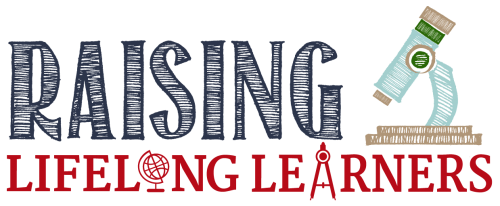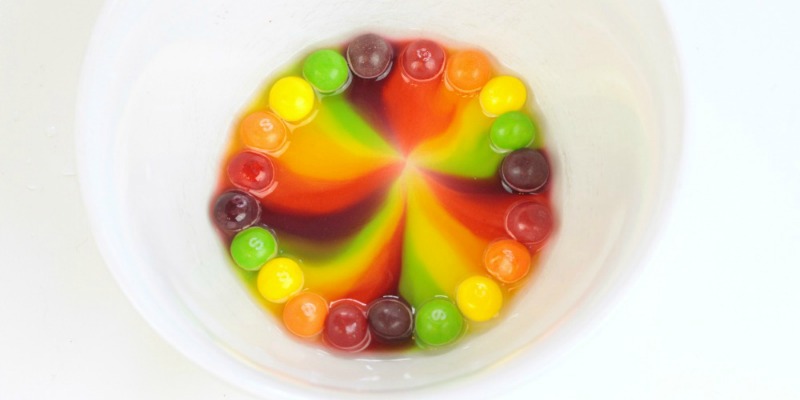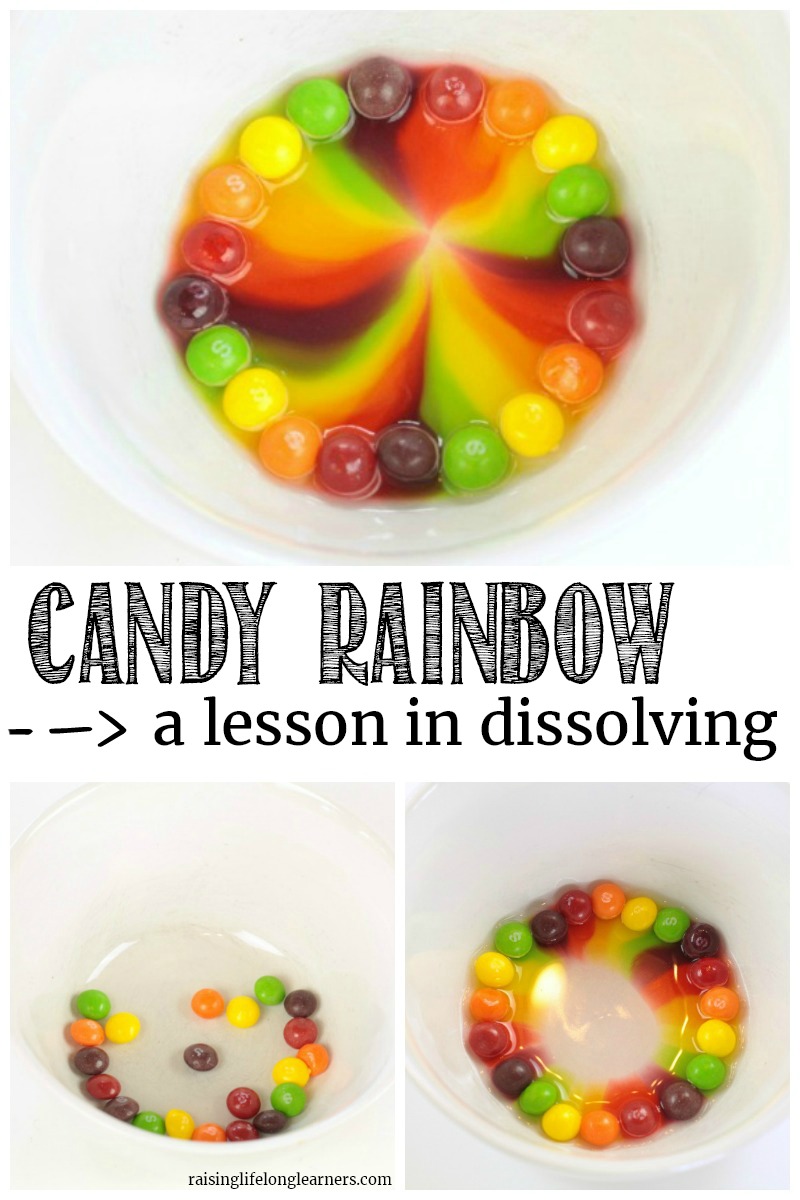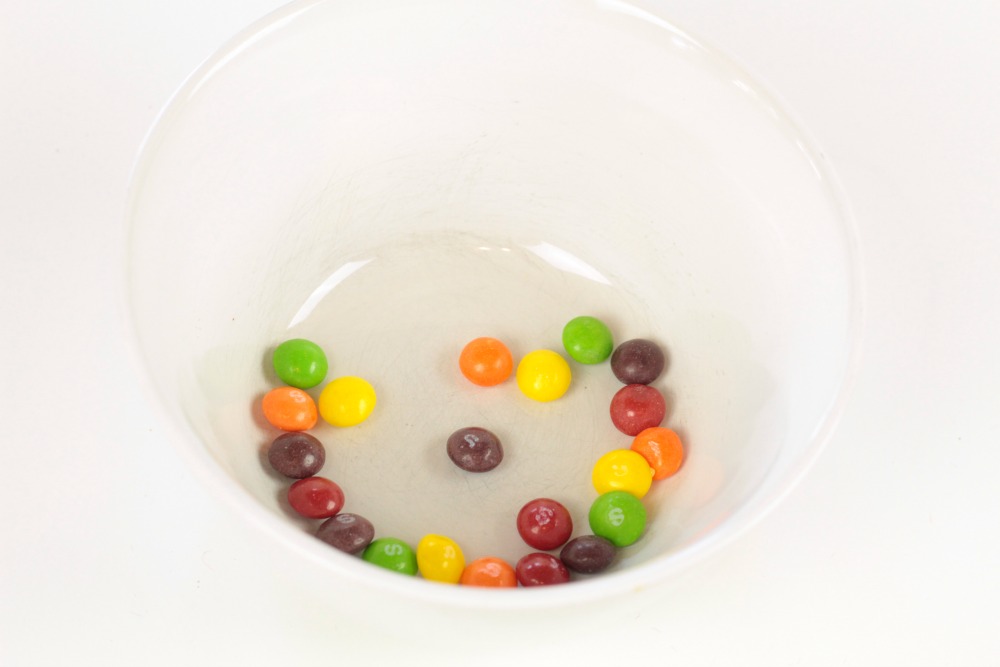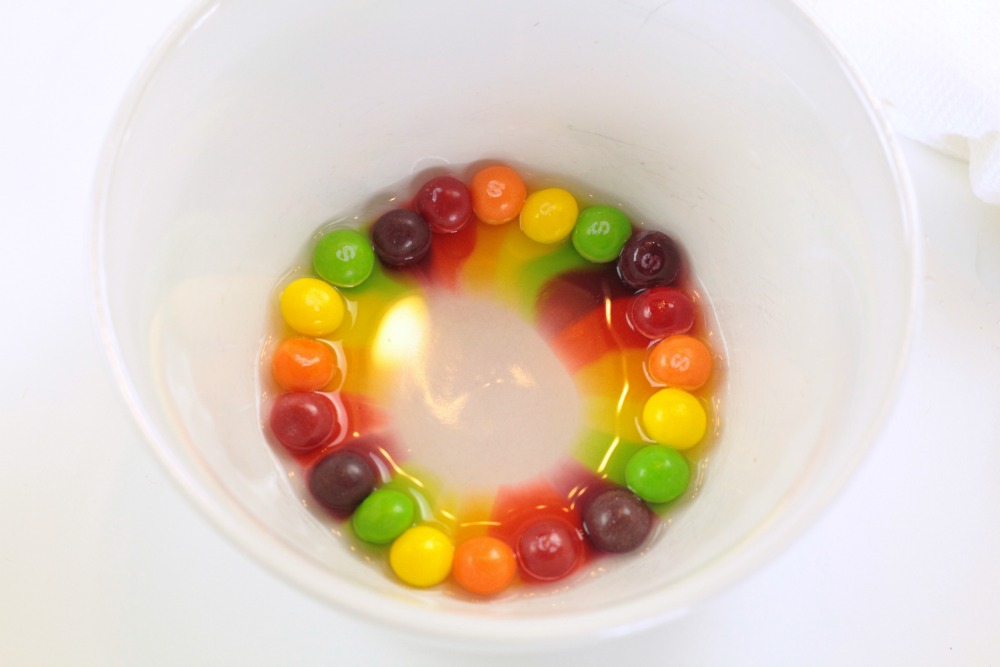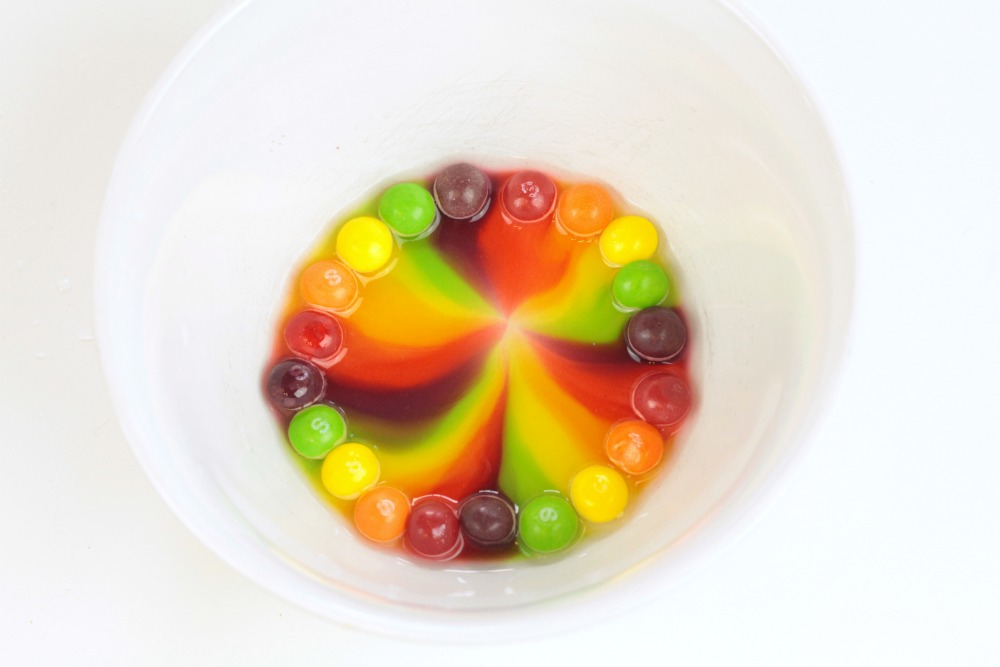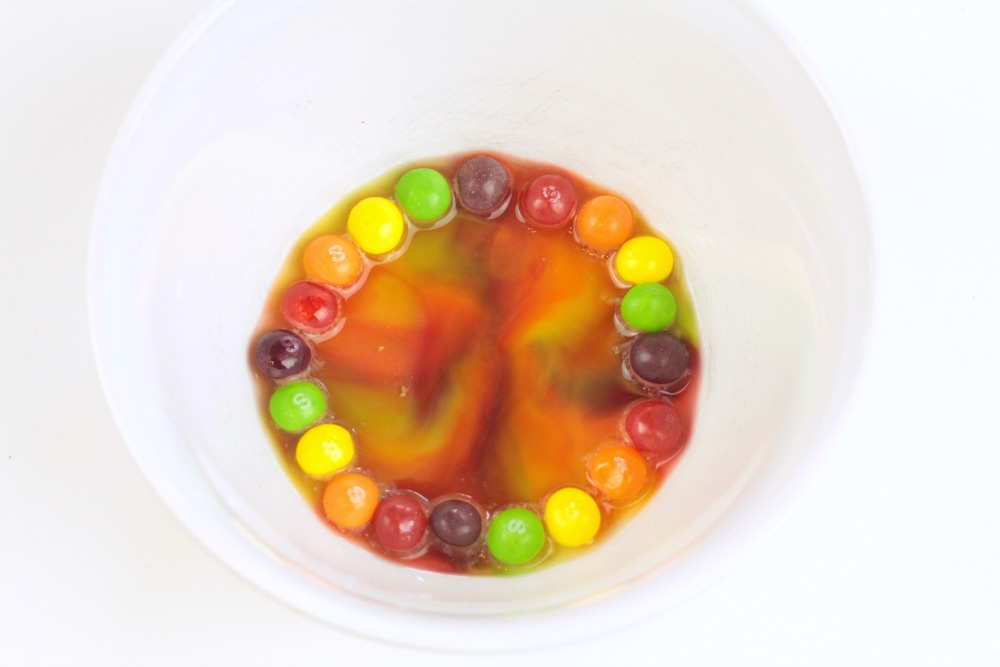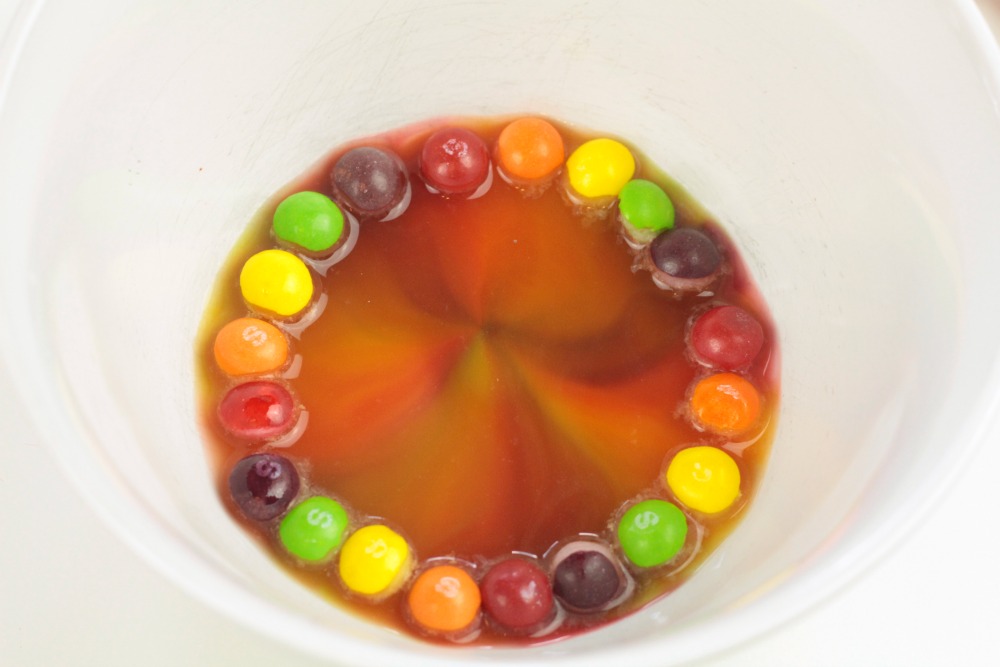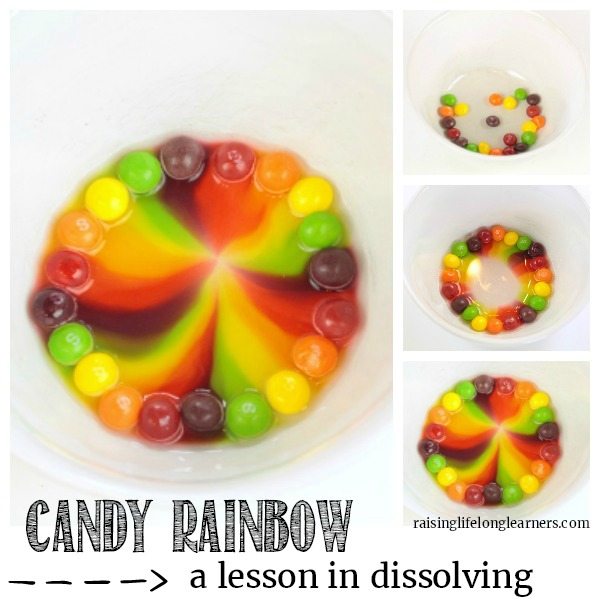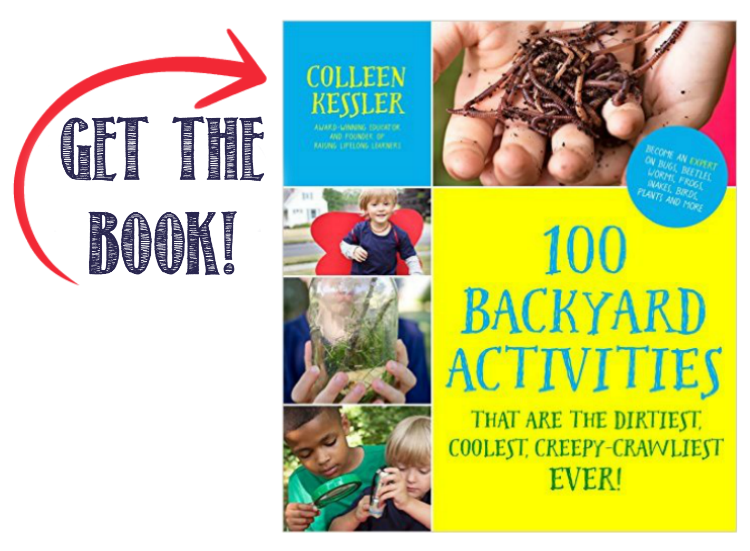Skittles Rainbow Science Experiment
When it comes to candy, my kids are huge fans. They went to a 4th of July parade and came back with more candy than they even get at Halloween, which means I had to come up with a way to use it up fast or they would eat it all in about three days. We’ve wanted to make a candy rainbow for some time now, and the 4th of July candy came with the perfect candy for this: Skittles! We used our Skittles to make the Skittles rainbow science experiment and learned a bit more about dissolving, absorption, and how colors mix.
Skittles Rainbow Science Experiment
Transform candy into a rainbow within seconds by the power of dissolving.
- Skittles or other bright candy
- Water
- White bowl or plate
Spread the candy into a pattern inside the bowl or plate. My kids love rainbows, so they chose to align the skittles as closely to a rainbow as they could.
Pour about quarter of an inch of warm water into the center of the bowl.
Watch as the color slowly spreads out from the skittles toward the center of the bowl.
Shake up the bowl and watch the colors mix.
Leave them alone for a few more minutes, and the colors start to separate again!
My kids thought perhaps it was the different flavors of the candy that made the colors remain separated, but we never found out the official explanation. Perhaps you can figure it out!
Skittles Rainbow Science Experiment Explained
Candy is full of dye (usually), which means the combination of dye and sugar dissolves quickly in water. Skittles are particularly good for this experiment because they are colorful and dissolve even faster than other candies. When placed in a shallow pan of water, the dye quickly dissolves and starts to absorb into the water, making a colorful rainbow. Ask your kids if they can figure out why the colors stay separated.
